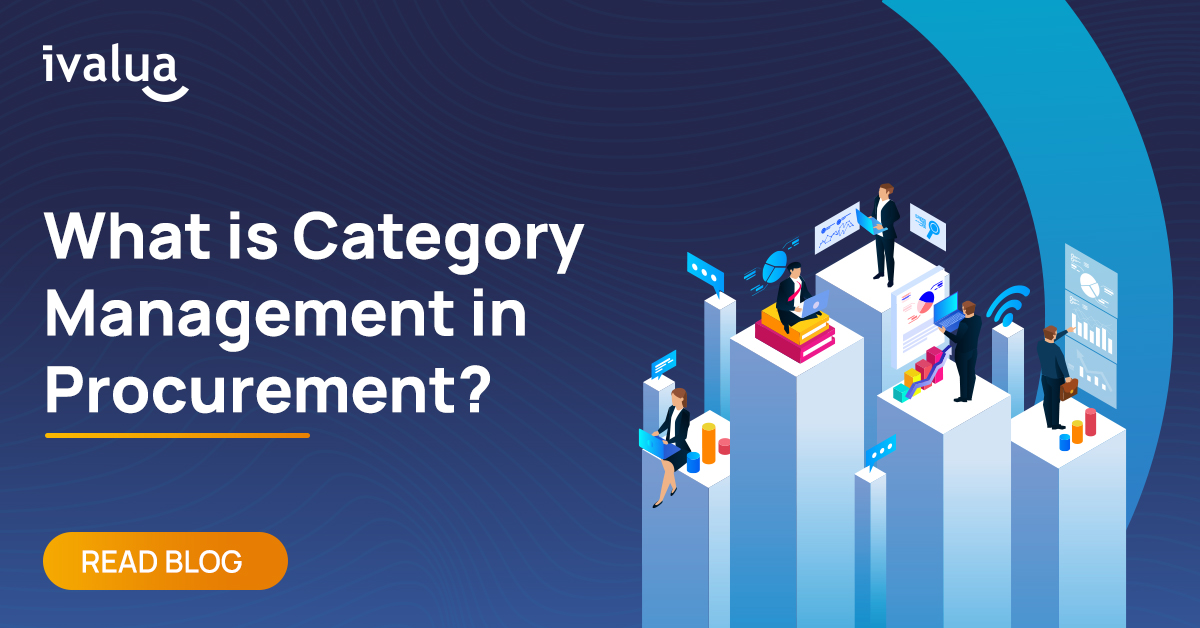Procurement used to be viewed as a cost center in the organization – a transactional function necessary for conducting business. However, in recent years, the focus has shifted to how procurement can add value to an organization, which has given rise to the idea of “strategic sourcing.”
In this blog, we’ll take a deep dive into the strategic sourcing and procurement, including what it is, key benefits, real-world examples, and how software can help procurement teams be more strategic.
What is Strategic Sourcing?
Strategic sourcing is a methodical and systematic approach to Procurement that continuously re-evaluates and improves an organization’s purchasing activities. It’s about ensuring that an organization is acquiring the goods and services it needs in the most efficient and cost-effective manner possible, while also taking into account factors like quality, supplier performance and total lifecycle costs.
The strategic sourcing process transforms procurement from a transactional function into a strategic business activity. By systematically analyzing spending patterns, assessing market conditions and cultivating strong supplier relationships, strategic sourcing enables organizations to optimize their supply chain, reduce cost, and improve quality and efficiency.
7 Step Strategic Sourcing Process
The following is a 7-step strategic sourcing process that streamlines and optimizes the Source-to-Contract journey:
Step 1: Identify Strategic Sourcing Opportunities
The strategic sourcing process begins with categorizing purchases into distinct groups based on the nature of goods or services, such as IT equipment, office supplies or manufacturing materials. Next, the company performs a detailed analysis of spend in each category, examining total expenditure, frequency of purchases, average transaction sizes, the criticality of the product or service, and any patterns in spend, such as seasonal fluctuations.
Once this is complete, the company quantifies the volume and total spend of goods and services purchased. Understanding each element is essential as it directly influences negotiating leverage with suppliers and opportunities for cost savings, such as bulk purchasing discounts. Additionally, this phase involves assessing the business needs driving these purchases, which helps teams understand the rationale behind procurement patterns.
Step 2: Research and Identify Potential Suppliers
This step begins by gathering a comprehensive list of suppliers who offer the products or services needed, tapping into various sources such as existing suppliers, online databases, industry reports, trade shows, and recommendations from business partners. Once a list of potential suppliers is compiled, a detailed evaluation of each supplier is conducted. Companies look at a variety of factors, including financial stability, reputation in the market, quality of goods or services, pricing structures, and ability to meet delivery schedules. The aim is to narrow down the list to a select group of suppliers that are best suited to meet the company’s specific requirements and standards.
Step 3: Develop Sourcing Strategy & Evaluate Supplier Suitability
Based on information gathered during each of the previous 2 steps, buyers (possibly in conjunction with Category Managers) will develop an initial sourcing strategy. This generally includes:
- Determining the appropriate process steps or milestones, schedule, and format: Request for Information (RFI), Request for Proposal (RFP), Request for Quotation (RFQ), Auction
- Draft the RFI, RFP, RFQ, as is appropriate
- Developing a lotting strategy, meaning the combination of goods/services, suppliers, plant/office/region, and volumes (if applicable).
To develop a sourcing strategy, it is critical that the sourcing team understand the organizational and business requirements. For example, companies may consider the supplier’s ethical practices, environmental policies, and compliance with relevant regulations and standards. In addition to these factors, the sourcing team may evaluate the supplier’s technical capabilities, and technological advancements. Companies may request samples, plan site visits and/or hold in-person meetings with the supplier to determine the value they deliver to the business relationship, and their potential for a long-term partnership.
Step 4: Release RFI/RFP/RFQ & Analyze Supplier Proposals
During this step, the focus shifts to the release of the RFx (RFI/RFP/RFQ and possibly, an Auction), communication with suppliers, and overall management of the process. Throughout each stage of the RFx process, the Sourcing team must consume, report on, and understand supplier feedback and submissions. Based on these data points, the sourcing team may adjust and modify their sourcing strategy.
Following the consideration and analysis of supplier proposals, suppliers may be shortlisted for final rounds of negotiations based on the results. During this phase, the company conducts a thorough review of submitted proposals and evaluates them based on pricing, quality of goods or services offered, compliance with specifications and other parameters. Some companies use scorecards or rating systems to quantify and objectively assess each proposal.
Step 5: Negotiation & Supplier Selection (Award)
The (final) negotiation phase generally begins with a great deal of analysis, covering all factors and requirements of the business. Negotiations aren’t just about getting the lowest price; they should focus on all crucial aspects of the goods/services in question, such as quality assurance, delivery schedules, warranty terms and flexibility to handle order changes or emergencies. Companies may negotiate with multiple suppliers simultaneously to leverage competitive offers, ensuring they get the best possible deal. Throughout this phase, clear communication, and strategic thinking are vital.
This stage is about choosing the suppliers who best meet the company’s criteria. This means that the decision-making process will likely necessitate collaboration across various stakeholders within the company to ensure that the chosen supplier(s) align with broader business objectives and strategies. The end goal is to finalize a list of suppliers who are best suited to provide the goods or services needed while contributing positively to the company’s overall efficiency, profitability, risk profile, and strategic goals. This careful selection lays the groundwork for successful, long-term supplier relationships and is a key factor in effective supply chain management.
Step 6: Contract Negotiation & Agreement Execution
This step marks the transition from supplier selection to formalizing business relationships. This stage involves drafting, negotiating, and finalizing contracts with the chosen supplier(s). Attention to detail is crucial here to ensure that all aspects of the agreement are accurately represented. The company’s legal team is pulled in to ensure that the contracts comply with relevant laws and regulations, and safeguard the company’s interests into the future. Negotiations to fine-tune the details help to identify, then clarify ambiguities and make adjustments as needed to create a fair and balanced agreement that fosters a strong, collaborative relationship with the supplier. Upon signing, the contract formalizes the relationship.
Step 7: Contract and Supplier Monitoring, and Continuous Improvement
Monitoring and continuous improvement involves regularly assessing how well suppliers are meeting their contractual obligations in terms of performance, quality, delivery, cost, and service. Key performance indicators (KPIs) and metrics are used to objectively measure and track supplier performance. Actively looking for opportunities to optimize the sourcing strategy is also critical, such as renegotiating contracts, exploring new suppliers or working closely with current suppliers to improve efficiency and effectiveness. Regular feedback loops and open communication channels with suppliers are essential for identifying areas of improvement and fostering innovation. When issues do pop up, corrective actions and/or other collaborative processes can be used to achieve compliance with expectations and contract obligations.
Seven Benefits of Strategic Sourcing
Implementing a strategic sourcing process in procurement brings a multitude of benefits to an organization:
- Cost savings: By analyzing spend and negotiating better deals with suppliers, companies can lower their purchasing costs. Bulk buying, better contract terms, and choosing cost-effective suppliers contribute to these savings.
- Improved quality and service: Higher quality purchases and better service can positively impact the final product or service delivered by the company.
- Risk mitigation: By diversifying suppliers and continuously monitoring their performance, strategic sourcing helps mitigate risks such as supply chain disruptions, quality issues and non-compliance with regulatory standards.
- Enhanced efficiency and productivity: Streamlining the procurement process through strategic sourcing reduces time and effort spent on transactional purchasing activities, increasing efficiency and freeing up resources for more strategic tasks.
- Stronger supplier relationships: By working closely with a select group of suppliers and ensuring fair contracts, companies build stronger partnerships that yield mutual benefits, such as innovation and prioritized service.
- Market and supplier intelligence: Companies gain valuable insights into market trends, pricing dynamics and supplier landscapes – intelligence that can be used to improve decision-making and stay competitive.
- Increased agility: With a well-thought-out sourcing strategy, companies can respond more swiftly to market changes, demand fluctuations, and emerging opportunities.
How Does Strategic Sourcing Differ From Traditional Procurement?
While traditional procurement focuses primarily on short-term purchasing activities and cost minimization for individual transactions, strategic sourcing and procurement adopts a long-term, holistic view. It emphasizes building strong, collaborative relationships with a select group of suppliers, aligning procurement strategies with the company’s overall business goals.
Strategic sourcing involves thorough market analysis, continuous supplier performance monitoring, and a focus on total cost of ownership rather than just the upfront price. This approach doesn’t only result in cost savings; it prioritizes quality, efficiency and risk management, transforming procurement into a strategic function within the organization.
Violia Case Study: Strategic Sourcing in Practice
A real-world example of strategic sourcing is the approach taken by Violia, a global leader in optimized resource management that operates in 40 countries. Prior to using Ivalua, the company struggled with managing a large and complex vendor ecosystem, integration with multiple information systems, and a lack of a common savings process and methodology. What’s more, there was no common contract database to pull information from.
After implementing Ivalua’s Source-to-Pay (S2P) platform, the company benefited from a centralized supplier repository that enables a single source of truth. The software integrates seamlessly with other information systems & ERP’s, enabling real-time financial reporting, close tracking of category action plans and real-time savings tracking. The team also enjoys access to a common contract repository and transparency into global contract lifecycle. Read the full Violia Strategic sourcing case study.
Future Trends in Strategic Sourcing
Emerging technologies are significantly impacting strategic sourcing, introducing new efficiencies and capabilities. Artificial Intelligence (AI) and Machine Learning (ML) are revolutionizing data analysis, enabling deeper insights into spending patterns, supplier performance and market trends. From real-time inventory data and demand forecasting, Procurement teams can now enjoy supply chain agility and inventory visibility. Collectively, these technologies are making strategic sourcing more data-driven, efficient and proactive, enabling organizations to better align their procurement processes with overall business goals.
Generative AI in procurement in strategic sourcing is another promising development, poised to revolutionize how organizations approach procurement. Known for its ability to create new content and solutions, GenAI’s integration in strategic sourcing processes and solutions are expected to deepen, offering more sophisticated and efficient ways to optimize procurement processes and drive innovation.
Strategic Sourcing Software: Enhance Your Sourcing Process
Strategic sourcing software, such as Ivalua’s Source-to-Pay software, significantly enhances the sourcing process by automating and streamlining key activities. With advanced analytics and data management tools, teams can analyze spending patterns and identify cost-saving opportunities for more informed decision-making.
Ivalua’s comprehensive Source-to-Pay solution integrates strategic sourcing as a key component that leverages advanced analytics and market intelligence to identify cost-saving opportunities, evaluate supplier performance and manage risks more effectively. Incorporated into the broader S2P framework, strategic sourcing with Ivalua allows for seamless transition from sourcing to procurement by leveraging the same set of tools, data, and AI, ensuring consistency and efficiency. All of this contributes to better supplier relationships throughout the procurement lifecycle.
Learn more about how Ivalua can help you take advantage of this critical process in procurement with a holistic approach to your Source-to-Contract process.




